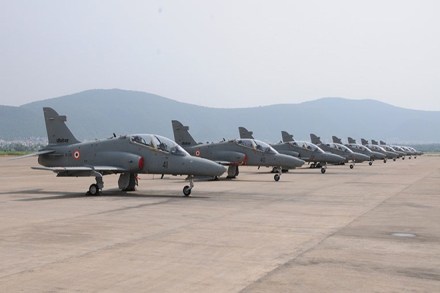The vision for the future will not just be about technology transfers and manufacturing but about creating a broader ecosystem which includes co-design, co-development, co-manufacturing, supply chain and support, says Rolls Royce. Kishore Jayaraman, President, Rolls-Royce, India and South Asia, speaks with Financial Express Online’s Huma Siddiqui. Excerpts:
What is Rolls-Royce doing in various initiatives of the government including Skill India, Make in India and others?
As India progresses towards becoming a developed economy, it is embracing technology at an increasing pace across all spheres of industry, society and nation building. The vision for the future will not just be about technology transfers and manufacturing but on creating a broader ecosystem which includes co-design, co-development, co-manufacturing, supply chain and support. This entails capability creation and skilling rather than just technology transfer and it is something that Rolls-Royce considers one of its core strengths.
A case in point is IAMPL which is a successful collaboration between Rolls-Royce and Hindustan aeronautics Ltd. (HAL) and a great example for the Make in India programme. It’s been performing very well as per our expectations. Rolls-Royce is very committed to build on this existing partnership with HAL. We are continuously exploring new areas for collaboration and to leverage each other’s strengths. We have established an excellent platform which is a true testimony of the Make in India initiative and our leadership wants to build on this platform.
In addition to strengthening the support in existing program, we are very keen to see how we could get new work to HAL and leverage their excellent capabilities.
Also read| Aero India 2019: New version of BrahMos will attract LatAm countries, say officials
Also, while both training and up-skilling are necessary for closing India’s skills gaps, the priority should be for all key stakeholders – policymakers, academia and industry – to work together to prepare young people to enter the workforce with the skills and education the businesses will require in the future. One way is to upskill the existing workforce.
Globally, Rolls-Royce invests millions of pounds every year in learning and development programmes to raise the standards of competitive performance, develop business acumen, management and leadership skills, promote innovation, help employees realise their potential and contribute to increased customer satisfaction. Secondly, as one of the world’s leading industrial technology companies, we invest in building a strong pipeline of diverse talent critical to the future success of our business. We’ve set a global target to reach six million people through our STEM education programmes and activities by 2020. Globally, we have around 1,400 Rolls-Royce STEM ambassadors who are actively involved in education programmes and activities.
Which are the projects that the company is participating here in the country?
Rolls-Royce has been steadily building its capabilities in India, across engineering, manufacturing, supply chain, digital and customer support to support local growth. The Aerospace Engineering Centre in Bangalore has more than 600 engineers contributing to our global aerospace engine programmes. Rolls-Royce’s R2 Data Labs, an acceleration hub for data innovation with a facility in Bangalore, develops data applications that unlock design, manufacturing and operational efficiencies and creates new service propositions for customers.
Today, more than 750 Rolls-Royce engines of 10 engine types are powering aircraft of the Indian military. Our engines power a wide variety of aircraft in the inventory of the IAF and Indian Navy – including combat and strike aircraft (the Jaguar, powered by the Adour Mk811), trainers (Hawk Advanced Jet Trainer, powered by Adour Mk871), strategic airlift aircraft (C-130J Hercules, powered by AE 2100) and even VV1P and Surveillance aircraft (ERJ145, powered by AE 3007).
What are the plans for India? Does it include any joint ventures with the private sector companies?
As the Indian Air Force undergoes its modernisation programmes, Rolls-Royce is committed to providing it with the best value, and highest quality products possible. We will continue to support today’s fleets and strive to further increase their capability. There are also future opportunities in India that can help to realise the country’s growth vision and efforts to indigenisation and reaching self-reliance. We are committed to working more closely with our stakeholders to enable them benefit from our innovative products, technologies and collaborative culture.
For the Indian Defence industry to continue its growth journey, there is a need to develop industry-specific skills and supporting infrastructure. Greater collaboration between global OEMs and the Indian private sector, with increased technology transfer, would further enhance India’s chances to create a vibrant defence manufacturing sector that will support both domestic and export requirements.
Any plans to set up manufacturing base here? If yes where do you plan to set it up?
Rolls-Royce is pursuing many opportunities in India, many of which strongly align with the Government of India’s Make in India agenda. We believe we not only have the right products and technologies to participate in all kinds of military aircraft programs, but also the desire to grow our footprint in India. We are continuously looking to develop local relationships. We are talking to several global aircraft OEMs to support them in their initiatives. We are very supportive of the Make in India initiative and are keen to co-develop and co-produce aero and marine engines in India.
What are the latest technologies you are showcasing at the show?
Rolls-Royce will be showcasing its powerful India partnership and technological prowess at the show where we will demonstrate its support of current programmes and future opportunities in India.
